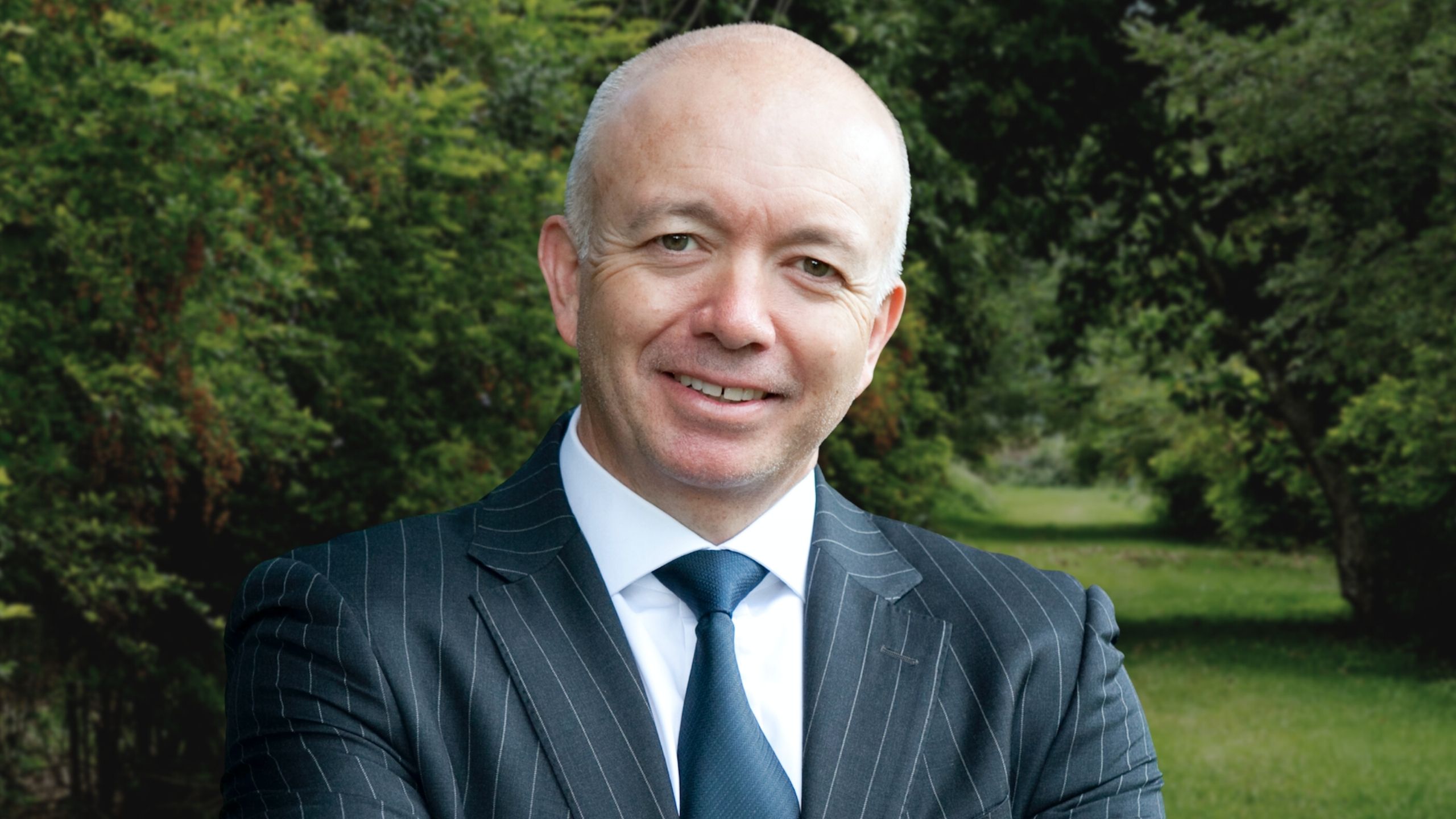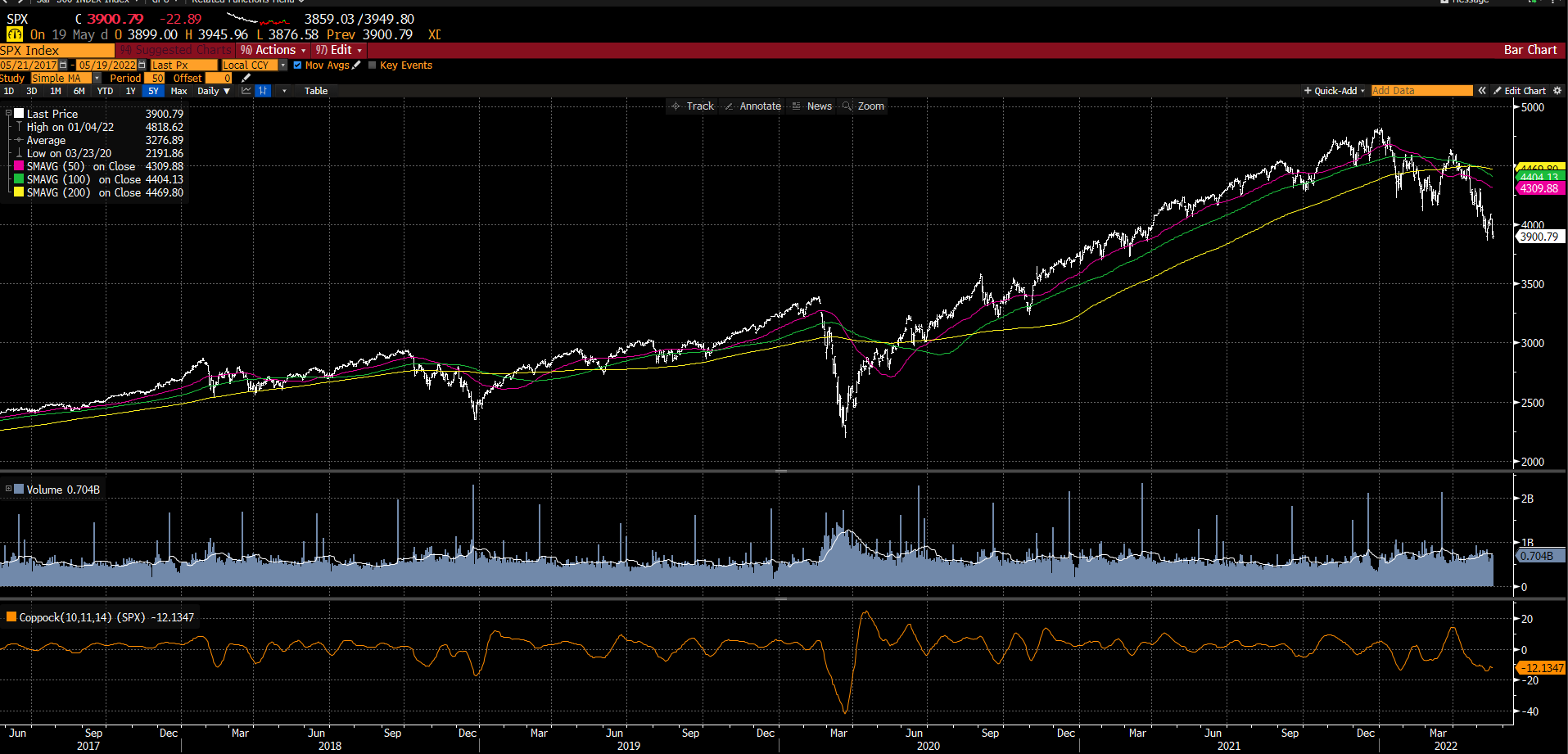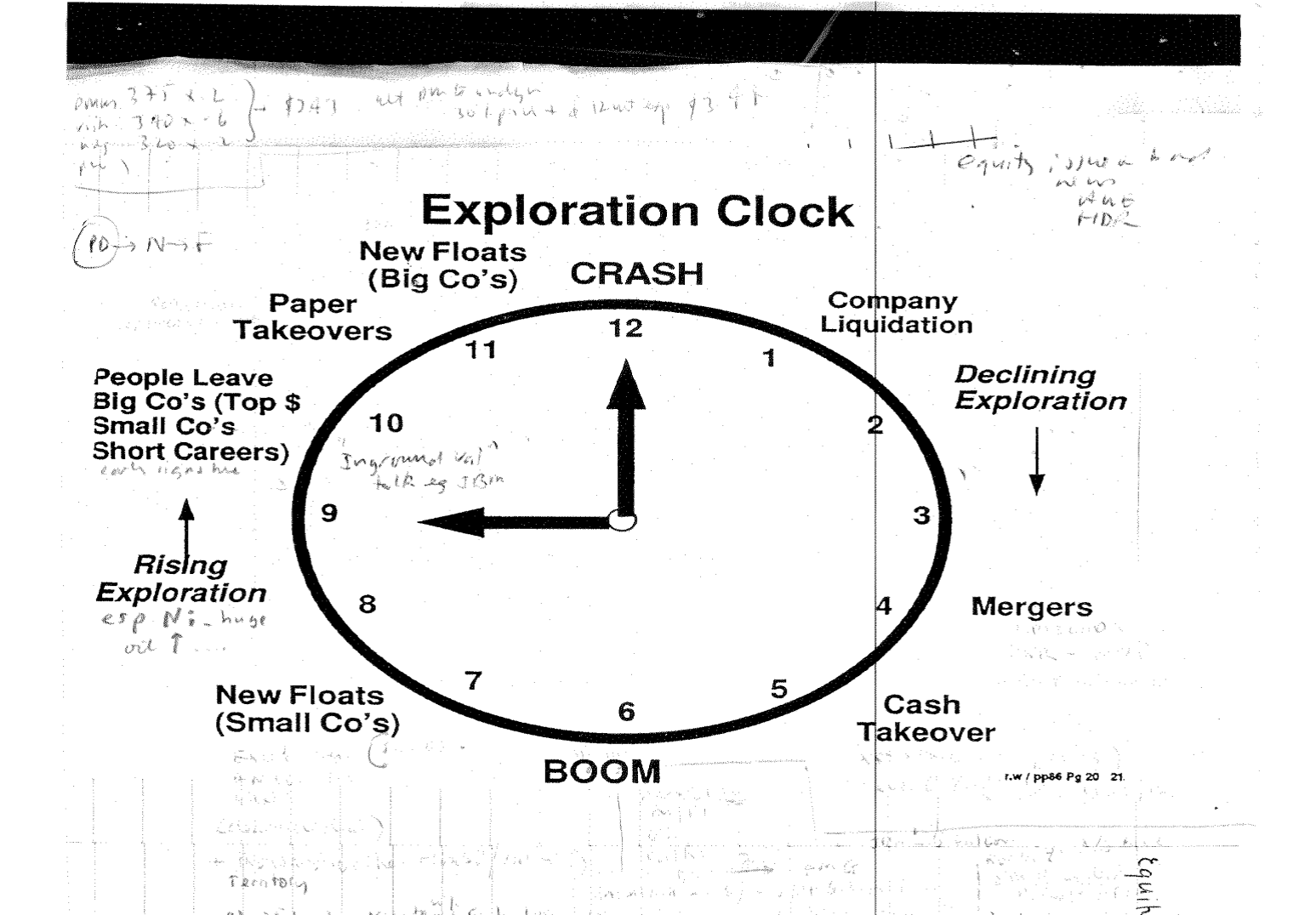6 stocks Ben Griffiths is buying (and 6 he's sold out of)
Ben Griffiths, of Eley Griffiths Group, is seriously bullish on resources and commodities. And while miners, developers, energy companies and related services stocks already make up around 30% of the Small Ords Index, in a recent Rules of Investing podcast, he reveals the firm's Emerging Companies and Small Cap funds are currently both overweight to these rapidly skyrocketing sectors.
So why is Griffiths so sanguine? Well, he notes that commodities have outperformed during each of the nine hiking cycles that we have seen since 1972, while long-term underinvestment and supply chain shortages have added fuel to these base metals and minerals' fire.
Plus, who can forget the transition to net zero? Which, in turn, is helping to stoke demand for "green" minerals like lithium, cobalt, nickel, aluminium and copper. And of course, the war between two of the world's biggest producers of commodities - which has, and likely will continue to create medium to long-term disruption to energy and soft commodities supply.
So which resources stocks is Griffiths backing? In this wire, you'll learn about the six stocks he has been adding to in recent months, as well as the growth names he has been selling out of (including crowd favourites PointsBet (ASX: PBH), Megaport (ASX: MP1) and Life360 (ASX: 360). Yikes...
Plus, he also shares why investors would be wise to keep an eye on inflation's "rate of change" rather than the actual prints themselves, as well as the two indicators that Griffiths is carefully watching as a signal for this bull to charge.
If you want to listen to the podcast, you can check it out here.
Note: This interview took place on Tuesday 17th May 2022. You can check out the podcast below.
.jpg)
The importance of keeping up with inflation's rate of change
Unsurprisingly, Griffiths points to inflation as the one topic that has captured investors' attention of late (and, of course, has been causing the most angst and anxiety). But instead of pouring over the next print, he believes it is the rate of change that investors need to be wary of.
"We want to ideally see a slowdown in the inflation rate," he says.
"In other words, a slow down in the momentum of new inflation prints that are issued rather than an acceleration, which is what we've been seeing of late."
It's unlikely that investors will see any signs of a slowdown before July, given the cycling of high numbers from last year. But once we see a slowdown, investors' nerves should be kept at bay.
"Now, it won't necessarily be smooth sailing, as we saw on Friday night, we had the employment numbers out in the United States and that showed that the labour participation rate is reducing in the US," Griffiths says.
"That basically means that labour supply is tightening. So you have strong demand for workers and you have reduced supply - meaning the cost of labour goes up, and that feeds directly into inflation."
It won't be lost on any readers that oil prices have also been on the tear - not great for people at the petrol pump, or inflation, for that matter - but great for oil investors.
"That also feeds into cost structures... So there are genuine elements that are going the wrong way," Griffiths says.
That said, investors would be wise to keep their eyes on the neutral rate in the US. As long as inflation stays high, the 2% or 2.5% neutral rate estimate will be wrong, he says. It will in, in fact, be higher. If the rate of change slows down, then the neutral rate will also come down - meaning further hiking will not be required, Griffiths adds.
Why this "bull" is in the yard: And which indicators he is watching
It's probably not what investors want to hear, but Griffiths says we "need to see a bit more pain" before this perpetual bull is ready to charge.
"We used to have an expression when I worked at ING, "Can you see the whites of their eyes yet?" And I don't think anyone has... I think they're still fairly relaxed with things," he says.
"I'm not forecasting any great cataclysm, but what I'm saying... is there's more pain to be felt, and there's already been substantial pain inflicted on investors."
He notes that a recent Wall Street Journal article outlined that 50% of stocks on major US stock indices have made new 52 week lows, while the average stock in the S&P 500 and the NASDAQ was down 25% and 27% respectively by the end of April.
"Those are some pretty beefy falls. That's a decent correction," Griffiths says.
"I want to see the capitulation I'm talking about. I want to see that inflexion in the inflation rate of change, and importantly, because I do don the hat of a technical analyst from time to time, I want to see relief rallies such as we see from time to time... I want to see decent breadth."
So what else does Griffiths want to see before he starts charging back into some of these beaten-down stocks? Well, he points to more stocks moving up and down, as well as new leadership and a broad advance from tech names.
"On technicals, I want to see a couple of indicators turn. I want to see the Coppock indicator (a measure of momentum and stock prices), which is a tried and true indicator that this bull never leaves home without... That hasn't turned yet. I want to see that turn," he says.

Ideally, investors should look out for technical levels in major indices, for example:
- The S&P 500 hitting the 3,500 mark
- The All Ordinaries hitting the 6,190 mark
- The Small Ordinaries hitting the 2,690 mark
"These are important technical levels that I think might accompany the cleanout or the final thrust downwards," Griffiths says.
"So there are a few things that need to happen before I get out of the yard as a bull and start trotting around and feeling pretty confident."
Commodities and resources are where the big money can be made
Eley Griffiths Group started positioning its portfolios towards resource names around 10 months ago, Griffiths reveals. And while resources and energy companies make up about 30% of the Small Ordinaries index, the firm's Small Company and Emerging Companies funds are currently overweight.
"Commodities tend to exhibit strong performance when we have a rate hiking cycle," he says.
"You can see on the chart (below). Commodities, emerging markets, gold, and even the Nikkei, but certainly commodities, have been the standout performer during each of the nine hiking cycles that we've seen in the global economy since 1972."

Adding fuel to commodities' fire is the pronounced shortages (thanks to underinvestment) in various base metals, as well as strong demand for "green" metals and minerals needed in electric vehicles and sustainable energy sources (like cobalt, lithium, nickel, aluminium and copper).
"And we've all seen the Russian invasion of Ukraine. That has provided quite serious, medium and probably longer-term disruption to energy and soft commodities supply," Griffiths says.
"That's bullish for commodities."
However, "the sleeper", Griffiths says, is the fact that market analysts have been conservative in their estimates on commodities and base metals - spot prices have consistently been higher than assumptions.
"This means that resource stocks are generally, and will be for a while, in an upgrade cycle," he says.
"So there are more earnings upgrades to come through for resource names."
So what's the catch. Well, Griffiths says it all depends on China's next move.
"China remains the marginal buyer of commodities. 40% to 60% of demand for almost every commodity is derived from China," he says.
With a strict stance on COVID, and a general slowdown in property and fixed asset investments, China will need to stimulate fast, Griffiths says.
"We think that there'll be the unfurling of some incentives. There'll be some easing. In fact... the rest of the world is tightening and they'll be starting to begin an easing cycle, which we think will stimulate its foundering economy," he says.
"So you'll have a policy response that will start to restart China - returning (the country) as a buyer of commodities when at the moment it's somewhat piecemeal."
He also points to Robin Widdup's stock market clock. Widdup was a famed gold analyst at JB Were in the '90s, who published an "exploration clock" that detailed the stages of a resources market cycle (see below):
.png)
"My guess would have us at about 7-7.30 o'clock. And we'll be at 8 o'clock probably by mid-year," Griffiths says.
"That essentially is a time when we have a lot of new floats, and we've had probably 40 or 50 new resource or materials IPOs. You have equity raisings, and we're having the beginnings of rising exploration. There's more activity."
Thus, Widdup's clock suggests that we are well into, but far from the conclusion, of the resources cycle, he says.
"So that should go some way to detailing why we have a pretty aggressive position exposed to resource names," Griffiths says.
So which resource names is Ben backing?
As fundamental investors, Eley Griffiths Group is focused on producers, but it does occasionally take a look at advanced development players as well.
"We will buy developers when we are very confident with the management and very confident with the resource or the reserve; when we're seen the pre-feasibility or the bankable feasibility study and we're comfortable with what's planned," he says.
He points to three conditions when analysing commodity-related stocks:
- Solid fundamentals;
- Solid management;
- And if possible, a supportive commodity environment.
He points to a previous position like Saracen, merged with Northern Star Resources (ASX: NST) in early 2021, as one of his better gold bets, as well as his current position and Perth-based gold producer Capricorn Metals (ASX: CMM).
Meanwhile, Griffiths names mineral sands miner Iluka Resources (ASX: ILU), and iron ore miner Champion Iron (ASX: CIA) out of Canada, as exciting positions right now.
With uranium returning to investors' radars, Griffiths reveals the firm was also an early investor in Paladin Energy (ASX: PDN) in both its Small Company and Emerging Company funds. He also points to oil and gas exploration company Karoon Energy (ASX: KAR) and engineering and services business Worley (ASX: WOR) as recent portfolio additions.
And what is he avoiding?
Like many in the market, Griffiths has been avoiding unprofitable companies, particularly tech, which have been sold down 25% since the beginning of the year to the end of April (compared to profitable stocks, down 4%), he says.
He's trimmed his position in PointsBet Holdings (ASX: PBH), and shares that the Emerging Companies Fund sold out of Bluebet Holdings (ASX: BBT) and Betmakers (ASX: BET) a "while ago".
He's also sold out of Megaport (ASX: MP1), Life360 (ASX: 360), and Pentanet (ASX: 5GG) in recent months.
Interestingly, Griffiths reveals that cash positions within both the Small Cap and Emerging Companies funds have increased in recent times, to around 10%.
"That's not because we see ourselves as master tactical allocators. It's because we sense markets have not completed their retracement," he says.
"We sense there will be some opportunities to buy the dip."
If Griffiths is right, I hope you have your wallets ready. Here's hoping the low comes sooner rather than later.
Access Australia's most compelling companies
Eley Griffiths Group specialises in focusing on small and emerging companies in Australia. To learn more please, visit our website.
Never miss an update
Enjoy this wire? Hit the 'like' button to let us know. Stay up to date with my content by hitting the 'follow' button below and you'll be notified every time I post a wire.
Not already a Livewire member? Sign up today to get free access to investment ideas and strategies from Australia’s leading investors.
1 topic
12 stocks mentioned
1 contributor mentioned

